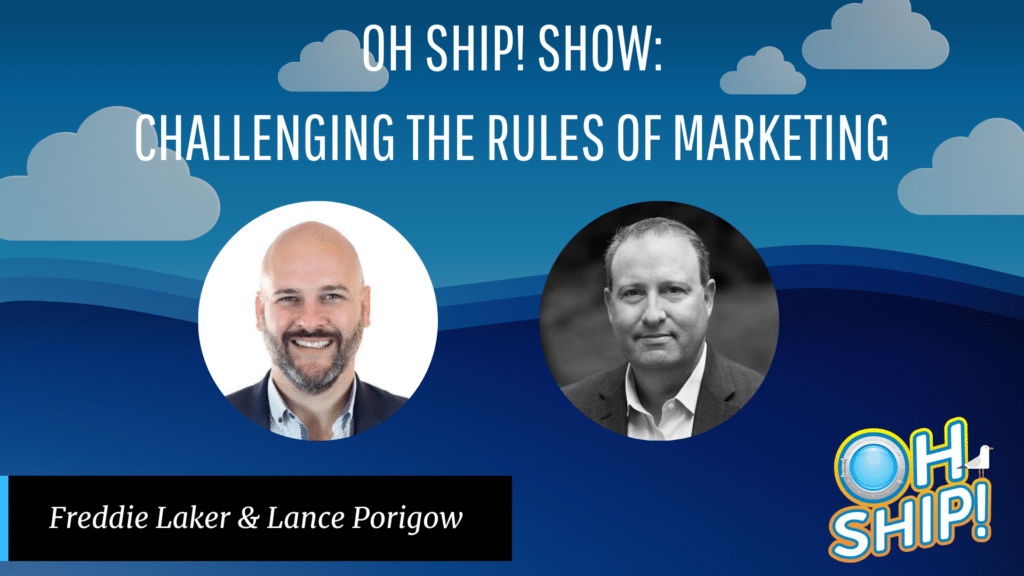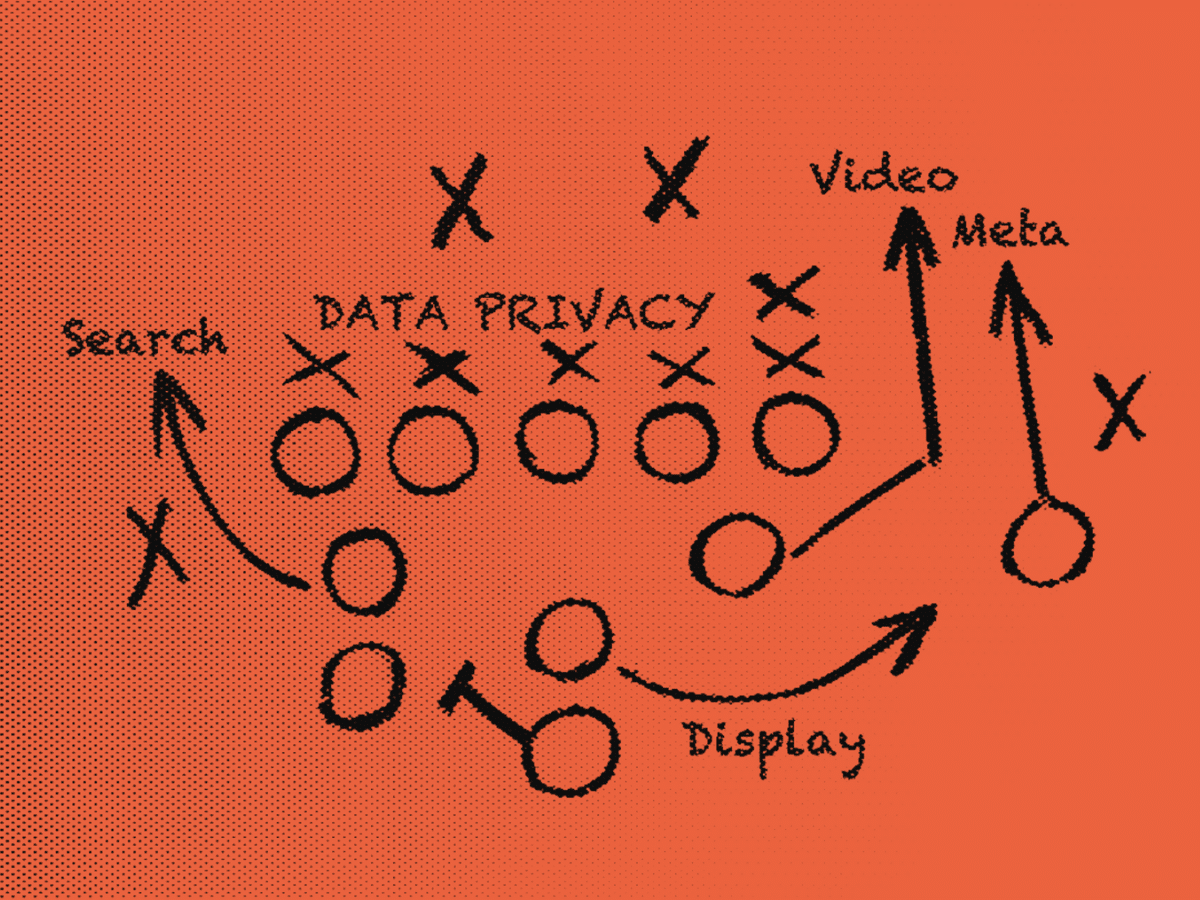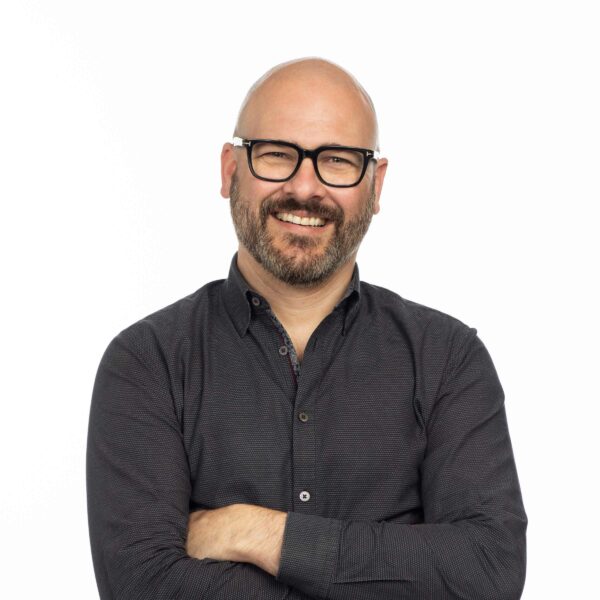Lance shares what inspired him to break one of the industry’s most long-standing rules.
Lance Porigow works as Chief Marketing Officer of the Shipyard, which focuses on leveraging creativity and data to deliver ingenious solutions for brands. Previously, he co-founded a marketing futures consultancy called Tomorro that envisioned how companies can prepare for the future of venture capital and marketing technology. “We kind of blew a lot of stuff up,” he says. “We challenged agencies, we challenged marketers to do things differently and look at where the future’s headed.” Lance began working with the Shipyard when it acquired this company.
Every time he does something new, he likes to stretch the rules a little more—and it always turns into a pivot, he says.
In his blog, Lance writes on challenging the biggest rules of marketing, and he described the most important rule to break on the Oh Ship! Show.
What’s the #1 rule that Lance advises breaking?
Marketers have long relied on the concept of segmentation to define their base. It involves breaking up the demographic they’re targeting into segments that represent several target audiences. But now, with data science, machine learning, and AI, the game is changing, says Lance.
“With all that, you can pretty much deliver a relevant message to everyone—hundreds of different types of people, multiple segments, simultaneously,” he explains. Focusing on just one will hinder your growth potential. “It limits your universe,” he says.
A segmentation set usually has five or six segments in it, and it tends to span 15-20% of the total marketplace. “They used to say in advertising, you pick a segment because you can’t afford to target everyone,” Lance says. He flips that idea on its head. “You can’t afford not to target everyone because if you’re just starting with 15% of the audience, you’re kind of playing with one hand tied behind your back.”
Today, you have very simple, low-investment ways of reaching everyone who falls outside of that target audience, says Lance. Read on to learn how he began questioning traditional methods, broadening the concept of a target audience.
How Lance began questioning the status quo
When his friend became the CEO of Welleda, he sought Lance’s help with advertising. However, they didn’t have a huge budget. The only way to compete was to innovate, Lance told him. They started with traditional research, conducting a six-figure segmentation study with 2,700 people over the course of six months to get their bearings.
Their research helped them generate an ideal customer archetype: the fearless, fit, and fun woman. She represented 18% of the opportunity and 12% of the marketplace. “We knew exactly who she was; there was a shrine in the conference room,” he laughs.
They had a good hypothesis and needed to test it. But they didn’t want to just find her—they wanted to find all the different people who would be interested in the products. So, they added 1,700 possible audiences that their study had identified, along with 120 ads geared toward them.
“We ended up with 575 performing audiences,” he says. Those were the ones with a positive ROI. They ranked them all, and they actually found more valuable audiences than their original archetype.
Now, they needed to figure out how to better target each of those valuable audiences to achieve 575 different revenue streams.
How can you actually do this—and budget for it?
You should still define the segment of the population that is most likely to buy your product. Keep producing custom content tailored to them and spending more human energy on this segment. Target them in your branding. Then, use machine learning and AI to target everyone else.
“Just be at the right place at the right time and say the right thing,” says Lance. “You can do that very simply by machine.”
Analyze your base.
Determining your target market segments is step one. This goes beyond just the typical list of five or six segments. Lance’s team combs through all of the possible audiences composed of people with specific behaviors, including the sites they visit and how they shop, which resulted in the 1,700 different possible audiences for Welleda.
Generate targeted messaging.
Consider all the possible messages you could share about your product, generating a long tail of potential supporting points that could motivate people to try it. His team came up with 120 different messages in their analysis for Welleda. Making 120 different banner ads targeting numerous users at sites they visit doesn’t take that much effort, Lance says. You can use social media or programmatic media to do so. Lance’s team uses dynamic creative optimization (DCO) platforms, which spontaneously generate ads after users load their messages and imagery.
Look for patterns.
As you begin to place these ads, you’re simultaneously conducting research on your base. Look at patterns in what people respond to, using data to figure out where your efforts are proving most effective. You’ll see combinations in behaviors and characteristics that lead to particular responses. As you test your audience, rank them in terms of interest level.
What was his most formative moment?
In 1994, at age 22, he was working his first job out of college, and his team was preparing for a major television shoot. It was both his first big break and his first Oh Ship! moment.
A week before the event, his boss quit, and her boss asked him to cover it—an enormous undertaking. He flew out to LA forty-eight hours before the shoot. “On my way over, on the flight, the huge LA earthquake happened—it was like a 6.7 on the Richter scale. The city was basically demolished; I didn’t even know if they’d be able to land. Highways were falling down, buildings were crumbling, the infrastructure was gone.”
After landing, he spoke with the producer and cost consultant. They were ready to call it quits, even though it would cost $150,000. Though the entire city had shut down, and the location had dropped out, they had an amazing director of photography, Alan Dabio—Stephen Spielberg’s EP—and they would lose him if they postponed. Lance wasn’t about to come back empty-handed, and he convinced them to do it anyway.
Speaking with the client, he tried to pass off the earthquake as no big deal. “Somehow, I convinced him to get on a plane to come out there,” he laughs.
They found a location that hadn’t crumbled to the ground: a Middle America house. Then they got a U-Haul to pick up furniture. “We shot between aftershocks,” he says. “We were the only production crew filming in Los Angeles 48 hours after the earthquake happened.”
If you believe in something, there’s always a way to do it, this moment showed him. The most incredible thing in this case was that it actually happened!








